1. INT
1.1. What Is Systems Biology
1.1.1. 0.1
1.1.2. 0.2
1.2. Nature of Biological Science
1.2.1. Introduction to Living Systems
1.2.1.1. 1
1.2.2. Thematic framework of biology
1.2.2.1. Relationship between structure and function: Specficicity and molecular recognition by macromolecules
1.2.2.1.1. 1.2
1.2.2.2. Flow of Energy and matter through living systems & metabolic networks
1.2.2.2.1. 1.3
1.2.2.2.2. 1.4
1.2.2.3. Control of energy, matter and information flows
1.2.2.3.1. 1.5
1.2.2.4. Error tolerance, detection and correction in replication, repair and expression of the genome
1.2.2.4.1. 1.6
1.2.2.5. structure of biology
1.2.2.5.1. 1.7
1.2.2.5.2. 1.8
1.2.2.6. molecular processes and assemblies
1.2.2.6.1. 1.9
1.2.2.7. tools and methods
1.2.2.7.1. 1.10
1.3. Biological data and how to deal with it
1.3.1. what is biological data
1.3.1.1. 2.1
1.3.1.2. 2.2
1.3.1.3. 2.3
1.3.2. Dealing with large data sets
1.3.2.1. 2.4
1.3.3. Properties of networks
1.3.3.1. basic network theory
1.3.3.1.1. 2.5
1.3.3.2. experimental approaches
1.3.3.2.1. 2.6
1.3.4. Modelling
1.3.4.1. 2.7
1.3.4.2. 2.8
1.3.5. Analysis
1.3.5.1. Metabolic Control Analysis
1.3.5.1.1. 2.9
1.3.5.1.2. 2.10
1.4. Maths
1.4.1. Linear Algebra
1.4.1.1. 3.1
1.4.2. Matlab
1.4.2.1. 3.2
1.4.3. R
1.4.3.1. 3.3
1.4.4. Functions
1.4.4.1. 3.4
1.4.4.2. 3.5
1.4.5. Intro to elementary probability
1.4.5.1. 3.6
1.4.5.2. 3.7
1.4.6. differential equations
1.4.6.1. 3.8
1.4.6.2. 3.9
2. DAH
2.1. Genome
2.1.1. Genome sequencing
2.1.1.1. 1.1
2.1.2. Databases and annotation
2.1.2.1. 1.2
2.1.3. Multiple genomes
2.1.3.1. 1.3
2.1.4. tools and resources
2.1.4.1. 1.4
2.2. Transcriptome
2.2.1. Genomics methods
2.2.1.1. 2.1
2.2.2. Normalization
2.2.2.1. 2.2
2.2.3. Gene expression
2.2.3.1. 2.3
2.2.4. Meta Analysis
2.2.4.1. 2.4
2.2.5. Chromatin
2.2.5.1. 2.5
2.2.6. Post Translational modification
2.2.6.1. 2.6
2.3. Interactome
2.3.1. Intro
2.3.1.1. 3.5
2.3.2. Networks
2.3.2.1. 3.6
2.4. metabolome
2.4.1. Methods
2.4.1.1. 4.1
2.4.2. Data Processing
2.4.2.1. 4.2
2.4.3. Analysis
2.4.3.1. 4.3
2.5. Genetics
2.5.1. RNAi
2.5.1.1. 5.1
2.5.2. Systematic Genetics
2.5.2.1. 5.2
2.5.3. Genetic Interactions
2.5.3.1. 5.3
2.6. Proteome
2.6.1. Mass spec
2.6.1.1. 3.1
2.6.2. Mascot and Sequest
2.6.2.1. 3.2
2.6.3. High throughput
2.6.3.1. 3.3
2.6.4. Protein Interactions
2.6.4.1. 3.4
2.7. Imaging
2.7.1. 6.1
2.7.2. 6.2
3. MAN
3.1. Basic Tools
3.1.1. Linear Algebra
3.1.1.1. 1.1
3.1.1.2. 1.2
3.1.2. Matlab
3.1.2.1. 1.3
3.1.3. Advanced Probability
3.1.3.1. 1.4
3.1.3.2. 1.5
3.2. Data Analysis
3.2.1. Advanced R
3.2.1.1. 2.0
3.2.2. Intro
3.2.2.1. 2.1
3.2.2.2. 2.2
3.2.2.3. 2.3
3.2.2.4. 2.4
3.3. Deterministic Modelling
3.3.1. 3.1
3.3.2. 3.2
3.3.3. 3.3
3.3.4. 3.4
3.3.5. 3.5
3.4. Stochastic Modelling
3.4.1. 4.1
3.4.2. 4.2
3.4.3. 4.3
3.4.4. 4.4
3.4.5. Bayesian Gene Networks
3.4.5.1. 4.5
4. Key
4.1. Exercise sheet
4.2. Read lecture notes
4.3. Straight into mind map
5. Exams
5.1. Paper 1
5.1.1. Integrative essays
5.1.2. Very blaggable
5.1.3. Best to revise general scientific theory
5.1.4. Need to be on the ball
5.2. Paper 2
5.2.1. Data acquisition and handling
5.2.2. Not so blaggable
5.2.3. data acquisition is the main focus
5.2.4. ontologies discussed every year so far
5.2.5. ppi techniques asked commonly
5.3. Paper 3
5.3.1. Mathematical modelling and analysis of networks
5.3.2. Repeated subjects:
5.3.2.1. birth death processes
5.3.2.2. monte carlo
5.3.2.3. Strongly hinted that network inference will come up this year
5.4. Paper 4
5.4.1. Data handling problem
5.4.2. Grant proposal
5.4.3. gonna be a bitch
5.4.4. need biology general knowledge
5.4.5. write outline grant proposal beforehand

